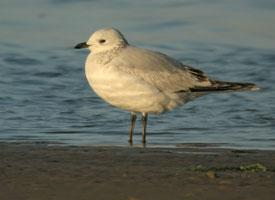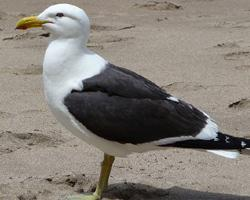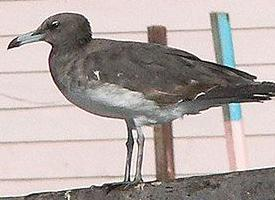
Statut de conservation
| Menacé |
Description de l'animal
The Relict Gull, scientifically named Ichthyaetus relictus, is a fascinating and somewhat enigmatic bird species that belongs to the family Laridae, which includes gulls, terns, and skimmers. This species is particularly notable for its limited and fragmented distribution, primarily centered around the temperate regions of East Asia. It is a medium-sized gull, exhibiting a blend of distinctive physical and behavioral traits that set it apart from its more widespread relatives.Physical Description:
The Relict Gull exhibits a sleek and streamlined body, with a length typically ranging from 40 to 45 centimeters and a wingspan that can extend up to about 110 centimeters. Adults display a striking plumage during the breeding season, characterized by a pure white head adorned with a narrow black ring around the bill, a smoky gray back and upper wings, and pristine white underparts. The bill is slender and dark, while the legs are of a pale greenish-yellow hue, adding to their distinctive appearance. In winter, their head pattern changes, showing more mottled grayish markings, which provides them with a different look outside the breeding season.
Habitat and Distribution:
The Relict Gull's name hints at its ancient lineage and somewhat relictual distribution. It is predominantly found in a few key locations within East Asia, particularly around the border regions of Mongolia, northeastern China, and southeastern Russia. It favors shallow saline or alkaline lakes and wetlands in these areas for breeding. During the non-breeding season, it migrates to coastal areas, estuaries, and mudflats along the Yellow Sea and the Bohai Gulf, where it can be observed feeding and roosting in larger flocks.
Behavior and Ecology:
Relict Gulls are social birds, especially outside the breeding season when they gather in flocks. They exhibit a varied diet that includes fish, insects, and small invertebrates, which they skillfully catch both on the wing and from the surface of the water or mud. During the breeding season, these gulls become territorial and nest in colonies on isolated islands within their favored lakes, laying two to three eggs in simple ground nests lined with vegetation and feathers.
Conservation Status:
The Relict Gull is classified as Vulnerable by the International Union for Conservation of Nature (IUCN), primarily due to its limited range, habitat degradation, and disturbance at breeding sites. The population is relatively small and faces threats from human activities, including land reclamation, pollution, and disturbance, which have led to declines in some areas. Conservation efforts are crucial to protect the habitats of this unique species and ensure its survival.
In conclusion, the Relict Gull is a distinctive and fascinating bird with a specialized lifestyle and habitat preference. Its unique characteristics and vulnerable status make it a species of significant interest to conservationists and birdwatchers alike. Efforts to protect its habitat and mitigate threats are essential to ensure that this relict species continues to grace the skies and waters of East Asia.
Animaux similaires
Nouvelles photos d'animaux
Top 10 des animaux
- Dolphin gull (Leucophaeus scoresbii)
- Japanese macaque (Macaca fuscata)
- Stone loach (Barbatula barbatula)
- Greek tortoise (Testudo graeca)
- Russian tortoise (Testudo horsfieldii)
- Galápagos tortoise (Geochelone nigra complex)
- Diana monkey (Cercopithecus diana)
- Moustached guenon (Cercopithecus cephus)
- Common flying dragon (Draco volans)
- Galápagos penguin (Spheniscus mendiculus)


